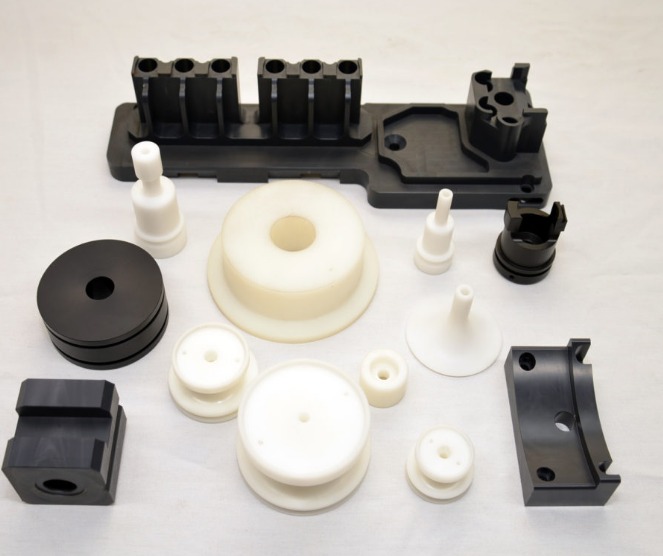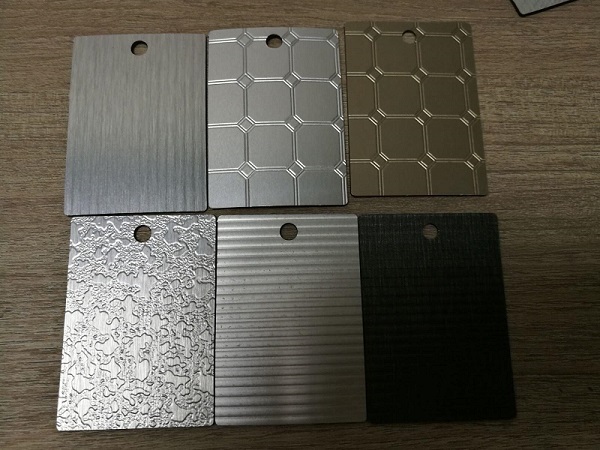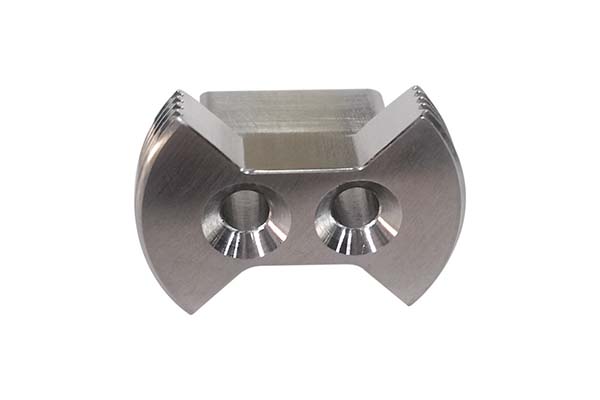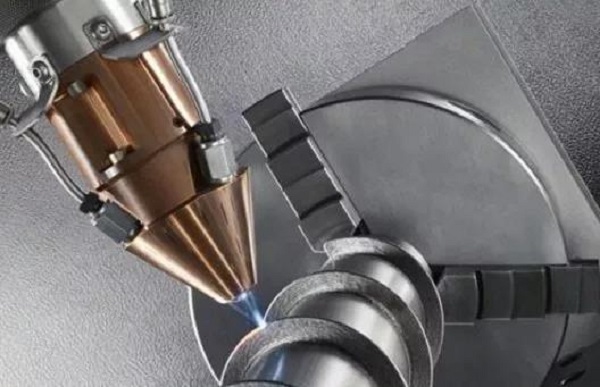If you’re working on mechanical projects—whether it’s fixing a piece of machinery, assembling furniture, or building industrial equipment—you’ve likely come across hex nuts. But a slotted hex nut is more than just a regular hex nut: it has slots cut into its top face, designed to work with a cotter pin (or split pin) for extra security. This simple addition prevents the nut from loosening due to vibration, torque, or regular use—making it critical for applications where safety and reliability matter most, like automotive axles, construction machinery, or aerospace components.
What Exactly Is a Slotted Hex Nut?
A slotted hex nut (also called a castellated hex nut in some regions, though technically “castellated” refers to a specific slot design) is a type of fastener with two key features: a hexagonal outer shape (for easy tightening with a wrench) and 2–6 evenly spaced slots on its top surface. These slots aren’t just for show—they’re engineered to hold a cotter pin, which passes through the slots and a hole drilled in the bolt or stud below the nut. Once the cotter pin is bent to secure it, the nut can’t rotate, even under extreme vibration.
Key Design Features That Matter
To understand why slotted hex nuts work, let’s break down their critical design elements:
- Hexagonal Body: The 6-sided shape ensures a secure grip with standard wrenches (like open-end or socket wrenches), allowing for precise torque application. Unlike round nuts, hex nuts won’t slip during tightening.
- Top Slots: Most slotted hex nuts have 4 slots (arranged in pairs opposite each other), but some industrial models have 6 for more flexibility in cotter pin placement. The slots are typically 1–3mm deep (depending on the nut size) and wide enough to fit a cotter pin of matching diameter.
- Internal Threads: The threads inside the nut match the bolt/stud’s thread size (e.g., M8, 1/2”-13) and pitch, ensuring a tight, load-bearing fit. High-quality slotted hex nuts use rolled threads (stronger than cut threads) for durability.
A Real-World Example: Automotive Wheel Hubs
I once worked with a small auto repair shop that was troubleshooting a recurring issue: a customer’s pickup truck kept having loose wheel nuts on the rear axle. After inspecting the vehicle, we realized the previous mechanic had used regular hex nuts instead of slotted hex nuts. The truck was used for hauling heavy loads, and the constant vibration would loosen the nuts over time. We replaced the regular nuts with 1/2”-20 slotted hex nuts (matching the axle studs) and secured each with a 3/32” cotter pin. Six months later, the customer reported no more loose nuts—proving the slotted design’s value for high-vibration applications.
How Slotted Hex Nuts Work (And Why They’re Secure)
The security of a slotted hex nut relies on a simple but effective system: the nut-cotter pin-bolt combination. Here’s a step-by-step breakdown of how it functions:
- Thread the Nut: Screw the slotted hex nut onto the bolt or stud until it’s tight against the workpiece (use a torque wrench for precision, as over-tightening can damage threads).
- Align Slots with Bolt Hole: Rotate the nut slightly so one of its slots lines up with the pre-drilled hole in the bolt/stud (this hole is called a “cotter pin hole” and is drilled before the bolt is installed).
- Insert the Cotter Pin: Push a cotter pin through the aligned slot and bolt hole. The pin’s legs should extend past the opposite side of the bolt.
- Secure the Cotter Pin: Bend the legs of the cotter pin outward (one up, one down) to lock it in place. This prevents the pin from falling out—and since the pin passes through the nut’s slot, the nut can’t rotate.
Why This Beats Regular Nuts
Regular hex nuts rely solely on friction between the nut and bolt threads to stay tight. But vibration, temperature changes, or repeated load (like a vehicle driving over bumps) can break that friction, causing the nut to loosen (a problem called “thread loosening”). Slotted hex nuts eliminate this risk because the cotter pin acts as a physical barrier to rotation. According to a study by the Industrial Fasteners Institute (IFI), slotted hex nuts with cotter pins reduce thread loosening by up to 95% in high-vibration environments compared to standard hex nuts.
Common Materials for Slotted Hex Nuts (And Which to Choose)
Slotted hex nuts are made from a variety of materials, each suited to specific environments and load requirements. Choosing the right material ensures the nut lasts and performs safely. Below is a comparison of the most popular options:
| Material | Key Properties | Best For | Load Capacity (Example: M10 Size) | Corrosion Resistance |
| Carbon Steel | Strong, affordable, easy to machine | General industrial use, automotive parts | 800–1,200 kg | Low (needs plating) |
| Stainless Steel (304) | Rust-resistant, non-magnetic, good strength | Outdoor/ wet environments (e.g., boats) | 650–900 kg | High |
| Stainless Steel (316) | Better corrosion resistance than 304 (resists saltwater) | Marine, coastal, or chemical applications | 600–850 kg | Very High |
| Brass | Non-sparking, decorative, good electrical conductivity | Electrical components, plumbing | 400–600 kg | Medium |
| Alloy Steel (Grade 8) | Ultra-strong, heat-treated | Heavy machinery, aerospace, construction | 1,500–2,000 kg | Low (needs coating) |
A Pro Tip for Material Selection
If you’re unsure which material to pick, start with the environment:
- Indoor, low-vibration: Carbon steel (plated with zinc for basic rust protection) is cost-effective.
- Outdoor or wet areas: 304 stainless steel works for most cases; use 316 if saltwater is involved (like boat trailers).
- Heavy loads or high stress: Alloy steel Grade 8 is a must—just make sure to pair it with a Grade 8 bolt (mixing grades can cause thread failure).
Sizes and Standards: How to Choose the Right Slotted Hex Nut
Slotted hex nuts follow global standards to ensure compatibility with bolts and tools. The two most common standards are ISO (International Organization for Standardization) (used in most of the world) and ANSI/ASME (used in the U.S.). Understanding these standards helps you avoid buying the wrong size.
Key Size Measurements to Know
When shopping for a slotted hex nut, you’ll need three key measurements:
- Thread Size: This matches the bolt’s thread size (e.g., M6 in ISO, 1/4” in ANSI). ISO sizes use “M” followed by the diameter in millimeters (e.g., M8 = 8mm diameter), while ANSI uses fractional inches (e.g., 3/8”).
- Hex Width Across Flats (WAF): This is the distance between two opposite sides of the hexagon— it determines which wrench size you need. For example, an M10 slotted hex nut has a WAF of 17mm, so you’ll need a 17mm wrench.
- Nut Thickness (T): This is the distance from the top (slotted side) to the bottom (flat side) of the nut. Thicker nuts offer more thread engagement (stronger hold), so opt for thicker nuts for heavy loads.
Common Standard Specifications
| Standard | Example Size | Thread Pitch | WAF (mm) | Thickness (mm) |
| ISO 8673 | M8 | 1.25mm | 13mm | 6.5mm |
| ISO 8673 | M12 | 1.75mm | 19mm | 10mm |
| ANSI/ASME B18.2.2 | 1/2” | 13 threads/inch | 13/16” (20.6mm) | 7/16” (11.1mm) |
| ANSI/ASME B18.2.2 | 3/4” | 10 threads/inch | 1-1/8” (28.6mm) | 5/8” (15.9mm) |
Mistake to Avoid: Mismatched Threads
A common error I’ve seen DIYers make is using a slotted hex nut with the wrong thread pitch. For example, an M10 nut with a 1.5mm pitch won’t fit an M10 bolt with a 1.25mm pitch—even though the diameter is the same. This can strip the bolt’s threads or cause the nut to loosen unexpectedly. Always check the thread pitch (marked on the bolt or nut) before buying.
Step-by-Step Guide to Installing a Slotted Hex Nut
Installing a slotted hex nut correctly is crucial for safety—if the cotter pin isn’t inserted properly, the nut can still loosen. Follow these steps for a secure installation:
Tools You’ll Need
- Slotted hex nut (matching bolt size and material)
- Cotter pin (size: the pin’s diameter should be 1–2mm smaller than the bolt’s cotter pin hole)
- Wrench (socket or open-end, matching the nut’s WAF)
- Torque wrench (for precise tightening, recommended for high-load applications)
- Pliers (to bend the cotter pin legs)
Installation Steps
- Prepare the Bolt/Stud: Ensure the bolt or stud has a pre-drilled cotter pin hole (if not, drill one using a drill bit slightly larger than the cotter pin diameter—e.g., 3mm bit for a 2.5mm cotter pin). Clean any dirt or debris from the threads to prevent binding.
- Thread the Nut: Hand-screw the slotted hex nut onto the bolt until it’s snug against the workpiece. Don’t use tools yet—hand-tightening ensures the threads align correctly.
- Tighten to Specified Torque: Attach the wrench to the nut and tighten it to the recommended torque (check your project’s manual—e.g., automotive axles often require 80–100 N·m for M12 nuts). If you don’t have a torque wrench, tighten until the nut is firm, then give it a 1/8 turn more (don’t over-tighten!).
- Align the Slots: Rotate the nut gently (using the wrench) until one of its slots lines up with the cotter pin hole in the bolt. You may need to loosen the nut slightly to align the slot—this is normal, but don’t loosen it more than 1/16 turn (too much slack reduces the nut’s holding power).
- Insert the Cotter Pin: Push the cotter pin through the slot and bolt hole. The pin’s head should sit flush against the nut’s top, and the legs should extend past the bolt’s opposite side (at least 5mm).
- Bend the Cotter Pin Legs: Use pliers to bend one leg of the cotter pin upward (toward the nut) and the other leg downward (away from the nut). This “locks” the pin in place—make sure the legs are bent at least 45 degrees to prevent them from straightening out.
- Trim Excess Length (If Needed): If the cotter pin legs are too long (they might catch on other parts), trim them with wire cutters—leave about 3mm of length to keep the pin secure.
When to Use (And Avoid) Slotted Hex Nuts
Slotted hex nuts are ideal for specific scenarios, but they aren’t the best choice for every project. Knowing when to use them will save you time and prevent failures.
Best Uses for Slotted Hex Nuts
- High-Vibration Environments: As mentioned earlier, they’re perfect for automotive parts (axles, suspension), industrial machinery (pumps, motors), or power tools—anywhere vibration could loosen regular nuts.
- Safety-Critical Applications: In projects where a loose nut could cause injury or damage (e.g., construction cranes, airplane landing gear), slotted hex nuts are often required by safety standards (like OSHA or FAA regulations).
- Permanent or Long-Term Installations: If you don’t plan to remove the nut often (e.g., farm equipment, outdoor signage), the cotter pin’s security is an advantage—regular nuts may need retightening over time.
When to Avoid Slotted Hex Nuts
- Frequent Removal: If you need to take the nut off regularly (e.g., a bike seat, a toolbox lid), the cotter pin adds extra steps—use a lock washer or a nylon-insert lock nut instead (they’re easier to remove).
- Low-Load, Low-Vibration Projects: For simple tasks like assembling a bookshelf or hanging a picture, regular hex nuts are cheaper and easier to use—slotted hex nuts would be overkill.
- Small or Tight Spaces: The cotter pin requires room to bend, so if the nut is in a narrow gap (e.g., between two metal plates), you may not have enough space to install the pin properly.
Yigu Technology’s Perspective on Slotted Hex Nuts
At Yigu Technology, we specialize in precision fasteners for industrial and automotive clients, so we’ve seen firsthand how the right slotted hex nut can improve product reliability. We recommend prioritizing two factors: material quality and compliance with standards. Cheap carbon steel slotted hex nuts may corrode quickly in wet environments, leading to premature failure—investing in 304 or 316 stainless steel (for harsh conditions) or alloy steel (for heavy loads) pays off in the long run. Additionally, always choose nuts that meet ISO 8673 or ANSI/ASME B18.2.2—non-standard nuts often have poorly cut slots or weak threads, which defeat the purpose of the cotter pin security. We also advise clients to pair slotted hex nuts with high-quality cotter pins (preferably stainless steel, not mild steel) to avoid pin breakage. In short, a slotted hex nut is only as good as its components—cutting corners on quality can undermine even the best design.
FAQ About Slotted Hex Nuts
1. Can I reuse a slotted hex nut and cotter pin?
It’s not recommended. Cotter pins are designed for one-time use—bending them again weakens the metal, and they may not hold securely. Slotted hex nuts can be reused if the threads are undamaged and the slots aren’t worn, but inspect them carefully first (look for stripped threads or bent slots).
2. What if the cotter pin hole in the bolt doesn’t line up with the nut’s slots?
If the hole and slots don’t align after tightening the nut to the correct torque, you have two options: (1) Loosen the nut slightly (no more than 1/16 turn) to align a slot with the hole—this is acceptable for most applications. (2) If loosening isn’t an option (e.g., safety-critical projects), you may need to drill a new cotter pin hole in the bolt (ensure the drill bit is the right size and the bolt is made of a drillable material).
3. Are slotted hex nuts the same as castellated nuts?
They’re similar, but not identical. A castellated nut has a “castle-like” design with taller, narrower slots (often 6 slots) and is typically used with a “hairpin cotter” (a U-shaped pin). Slotted hex nuts have shorter, wider slots (usually 4) and use standard cotter pins. In most cases, they’re interchangeable for general use, but check your project’s specifications for clarity.
4. How do I remove a slotted hex nut with a cotter pin?
First, use pliers to straighten the cotter pin’s legs. Then, pull the pin out of the nut and bolt (you may need to wiggle it slightly if it’s rusted). Once the pin is removed, use a wrench to loosen and unscrew the nut—if the nut is stuck, apply a penetrating oil (like WD-40) and let it sit for 10–15 minutes before trying again.
5. What torque should I use for a slotted hex nut?
Torque depends on the nut’s size, material, and the application. For example:
- M8 stainless steel nut: 20–25 N·m
- 1/2” alloy steel (Grade 8) nut: 70–80 ft-lb (95–108 N·m)
Always refer to your project’s manual or the bolt manufacturer’s torque chart—over-tightening can strip threads, while under-tightening reduces the nut’s holding power.






